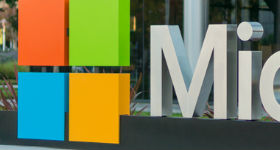As the Surface Pro 4 and Surface Book go on sale this week, keep in mind the latest hardware from Microsoft is only beginning. There is a full pipeline of new products we'll see in the next two years as the company continues its demonstration of how to build the best Windows gear. It's time to speculate on what Microsoft will be rolling out in the months to come.
The existence of the Surface Mini was confirmed this week, a small version of the Surface tablet that Microsoft never shipped. Scheduled to ship at the same time as the Surface Pro 3, the tablet had engineering models built and tested out by Microsoft employees. Microsoft decided against shipping the device, but that doesn't mean that other OEMs might borrow the concept to compete against the iPad Mini.
It also doesn't rule out a future Mini, if designers can find the proper balance of hardware, design and price to attract customers, but I suspect it's going to take at least one or two Intel chip iterations before there's a revisit to the market niche. ARM seems to be a big headache than supporting a straight line Intel software base.
A Surface Mini would also have to find a balance point with a Surface Phone. The first generation of phones-as-computers has made its debut with the Lumina 950 and 950 XL, using Windows 10 and the Continuum concept to enable the use of a phone as a full-blown PC if docked to a larger display with a keyboard and mouse. Today's limitation is the design trade between full PC computing power and full phone battery life, with battery life winning over computing power. Expect this to take three to five years before the proper balance of "good enough" CPU to drive a PC experience ends up in a phone.
 Image via Shutterstock
Image via Shutterstock
For Surface to go smaller, Intel is going to have to keep working Moore's Law. Larger, however, is more a matter of falling price points as manufactures get better in producing higher quality displays and larger amounts of storage for lower cost.
Consider the leaks of Samsung's "supersized" Galaxy View tablet as a foil for what Microsoft could do. The $600 18.4 inch Android device has its own kickstand and even a built in handle to carry it around. Compare that to the 12.9 inch iPad Pro, 12.3 inch Surface Pro 4 and the 13.5 inch Surface Book. It's easy to imagine Microsoft looking at a 14 to 15 inch class Surface Pro tablet to fill out the Surface Pro line, while Pro 4 goes to the low end and the Pro 5 is the "new" model in the middle of the family.
Similarly, I'd expect the 13.5 inch Surface Book to be joined by a larger screen model in the future, something in the 14 to 15 inch range. It's also possible to imagine a lighter, MacBook Air class Surface Book, but this puts Microsoft on a direct path to challenge existing OEM Ultrabooks. It may not be worth the trouble.
Desktops, servers, and all-in-ones are a more interesting discussion. The all-in-one large screen department seems to be owned by the OEM world and is difficult for Microsoft to add value and sizzle here. Desktop boxes are overdue for a refresh -- everything is either a mini-tower or a large tower. MIcrosoft could throw away the book with the current crop of desktops, starting with a clean sheet based upon Surface Pro/Surface Book hardware design. There's too much metal and plastic in the stock desktop tower. A Surface-based design would provide a lean, power efficient desktop box that doesn't suck up a lot of space.
Building servers is something Microsoft has already done for its own data centers. Could the company get economies of scale by simply ordering more of them, consuming a good chunk of production for its own Azure use and selling the rest to others, be they cloud operators or enterprise customers? Amazon and Google also build their own data center hardware, but they have no designs on selling it. Microsoft has shown no hesitation to challenge the status quo -- even its own, when it released the Surface Book next to the Surface Pro 4. Being able to ship its own servers might be next.
Edited by
Kyle Piscioniere